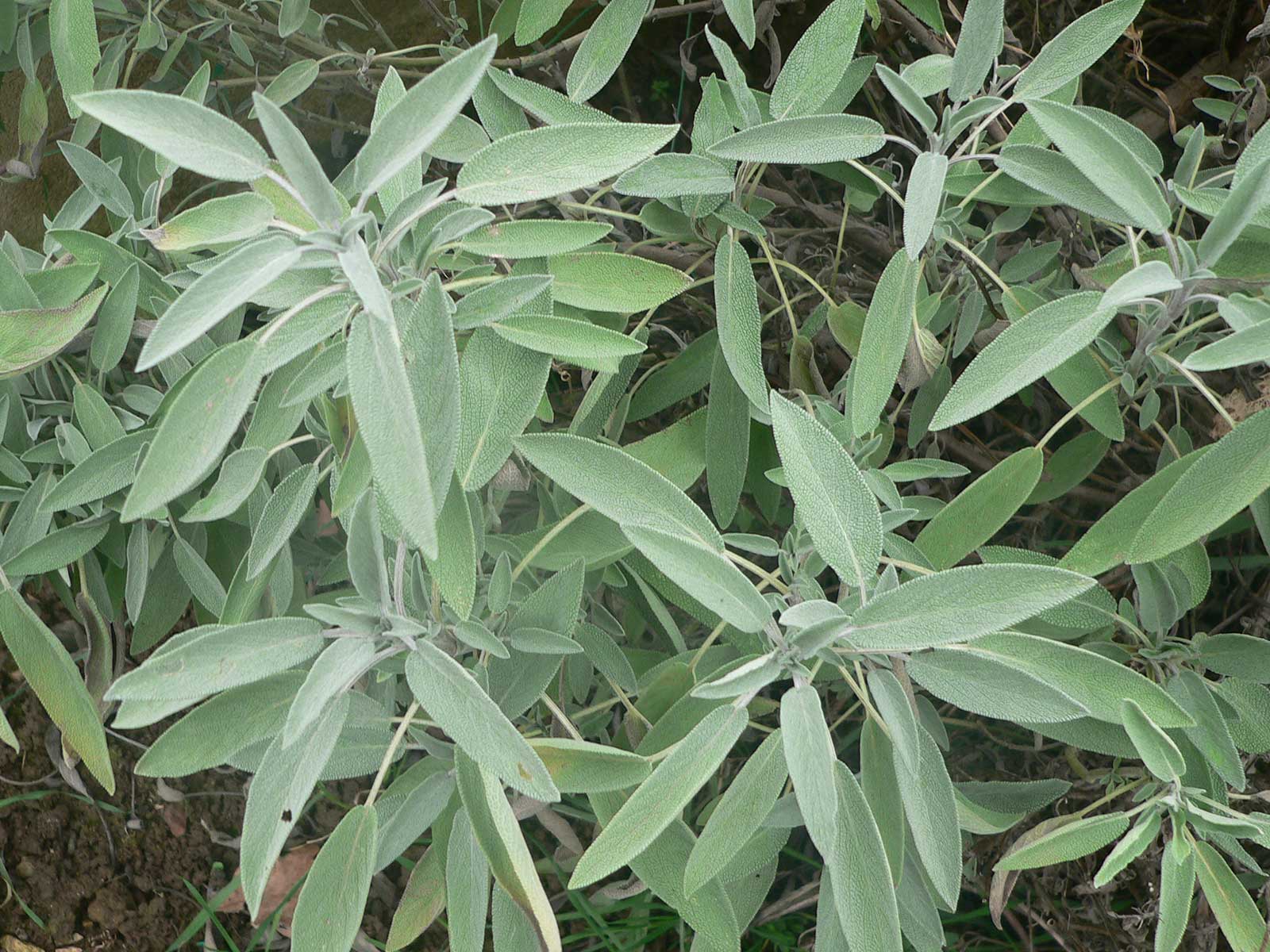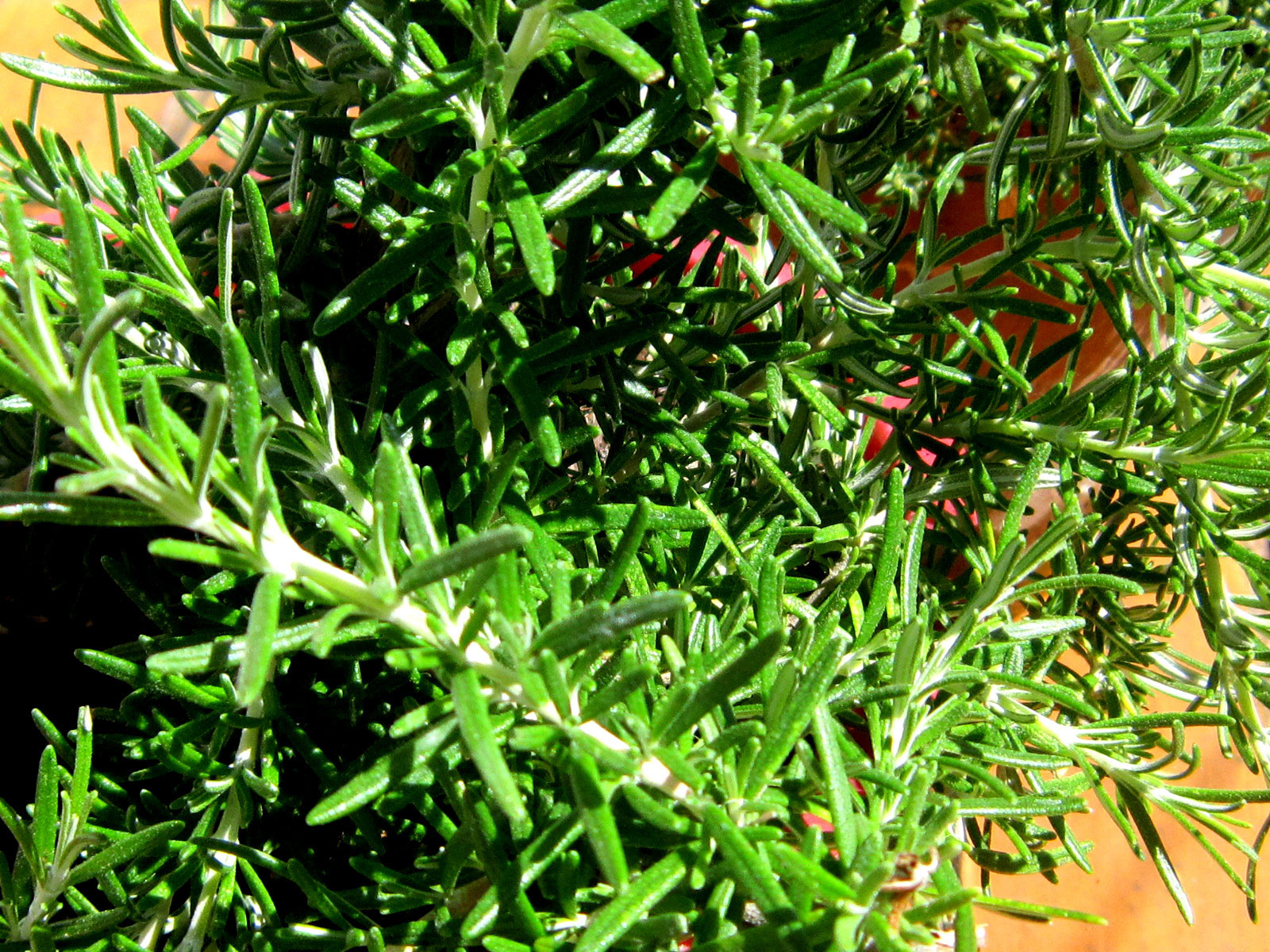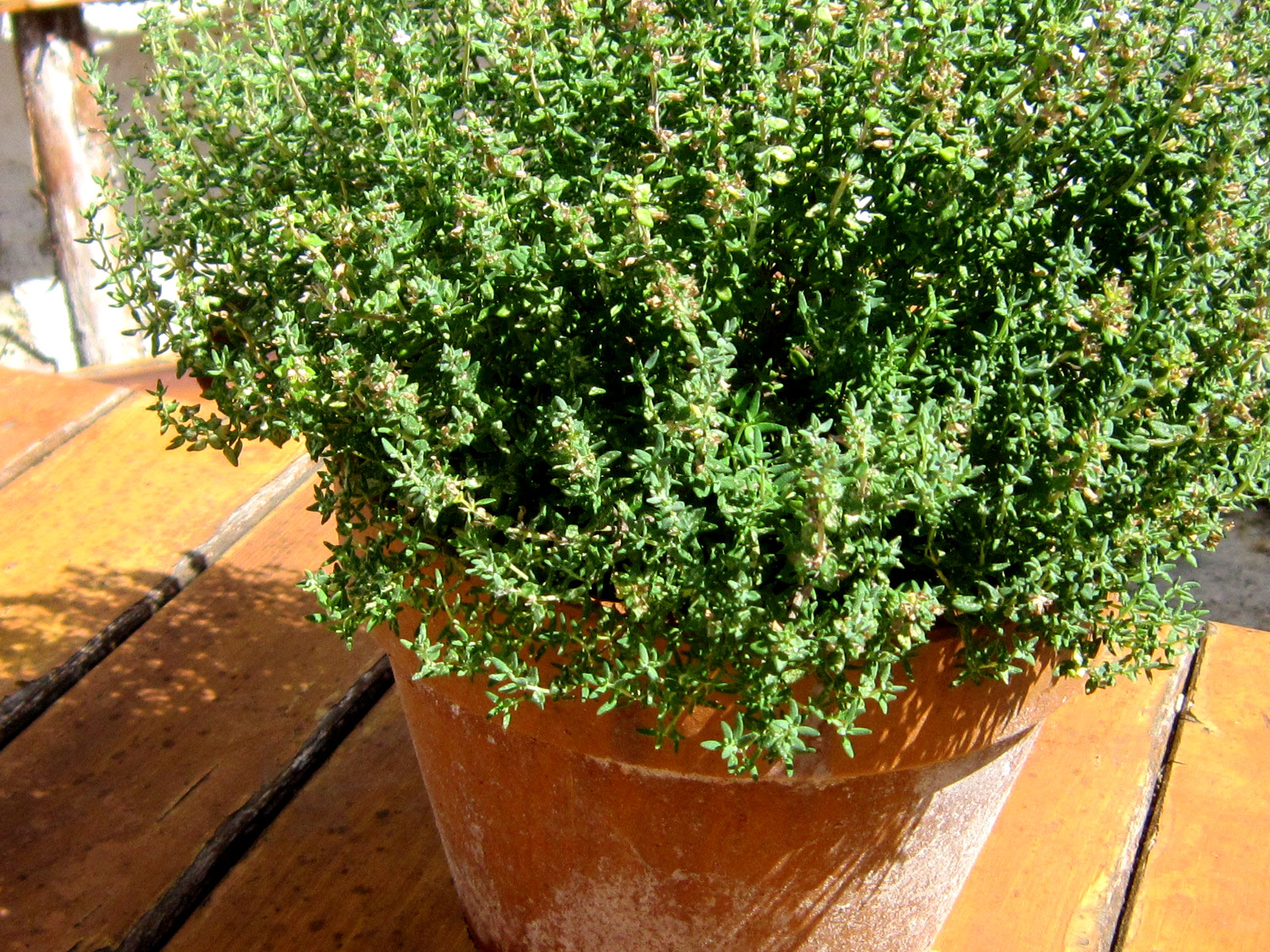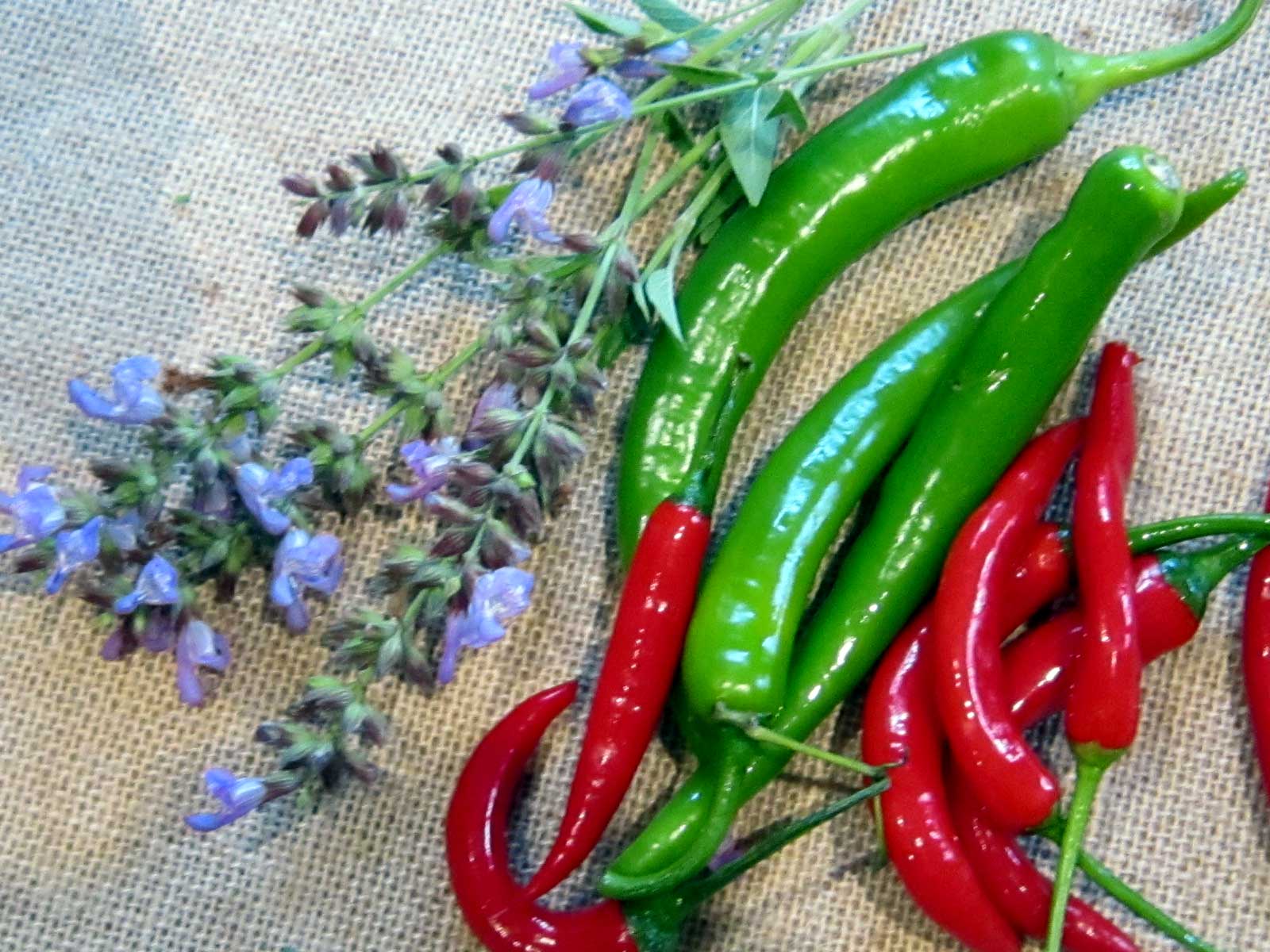The flavour of sage is savoury and slightly peppery and is greatly increased when dried. Once dried it can be stored for many months. Sage is a member of the mint family and is often used in recipes for turkey, duck, pork, and goose. The rosmarinic acid found in sage gives it powerful health benefits.
Dehydrating Sage |
Uses |
|
| Fresh Weight | 100 Grams | Cooking fatty meats |
| Dried Weight | 14 gms | Use to make tea |
| Flakes 10 gms fresh | 1 teaspoon dried | Use in pot pourri |
| Prep Time | 20 minutes | As a skin salve |
| Drying Time | 8-10 hours | |
| Drying Temperature | 125 | |
| Health Benefits | Improves brain activity, anti-inflammatory, prevents osteoporosis, aids digestion, improves skin conditions. | |
EQUIPMENT
- Plastic bowls
- Colander
- Food Wash
PREPARATION
If you grow your own herbs, harvest the sage when the flowers are just beginning to bloom for the best flavour. Soak the sage in a fruit and vegetable wash for a few minutes and drain. Remove any dead or damaged leaves.
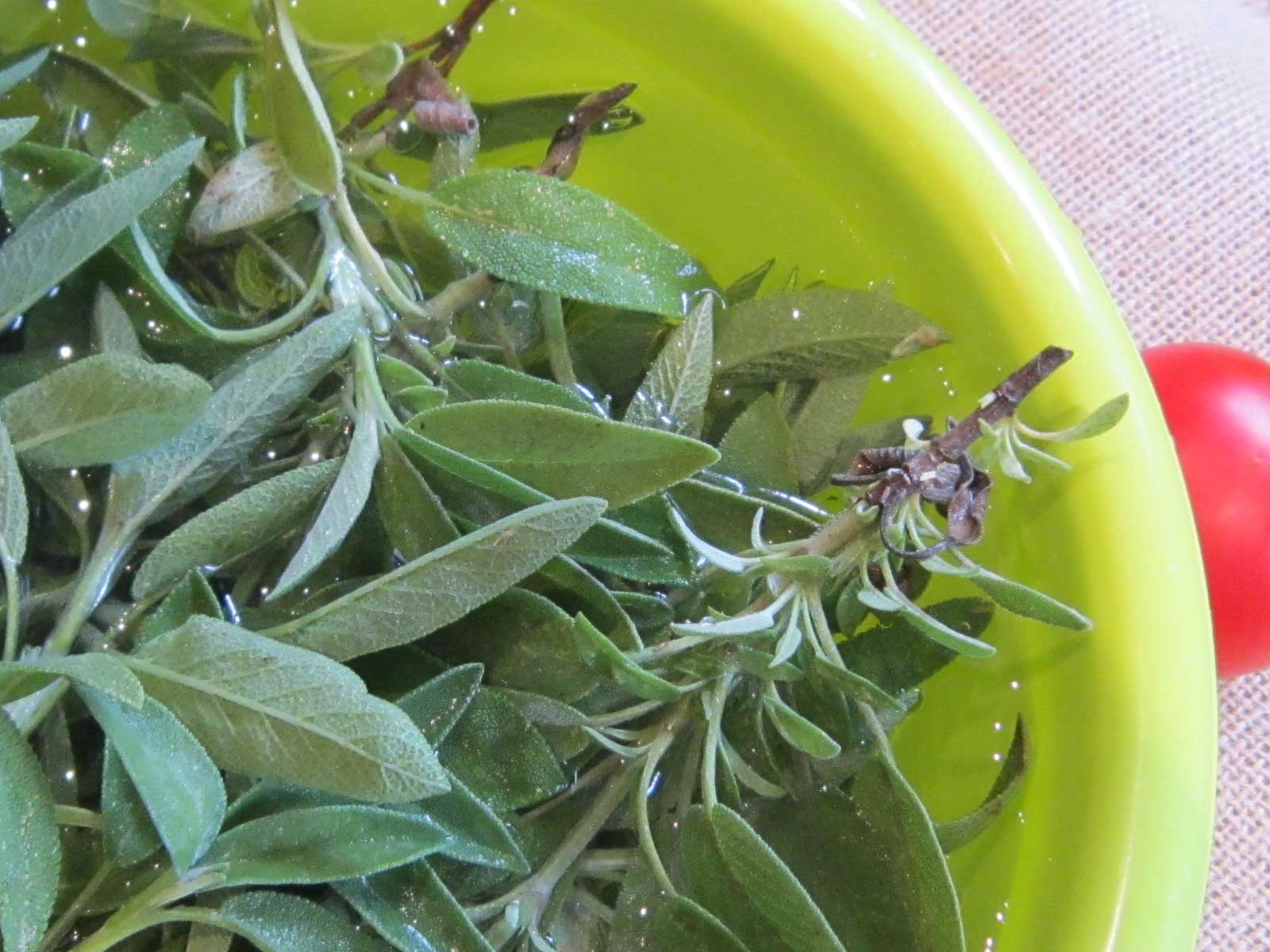
DEHYDRATING
Spread out on dehydrator trays.
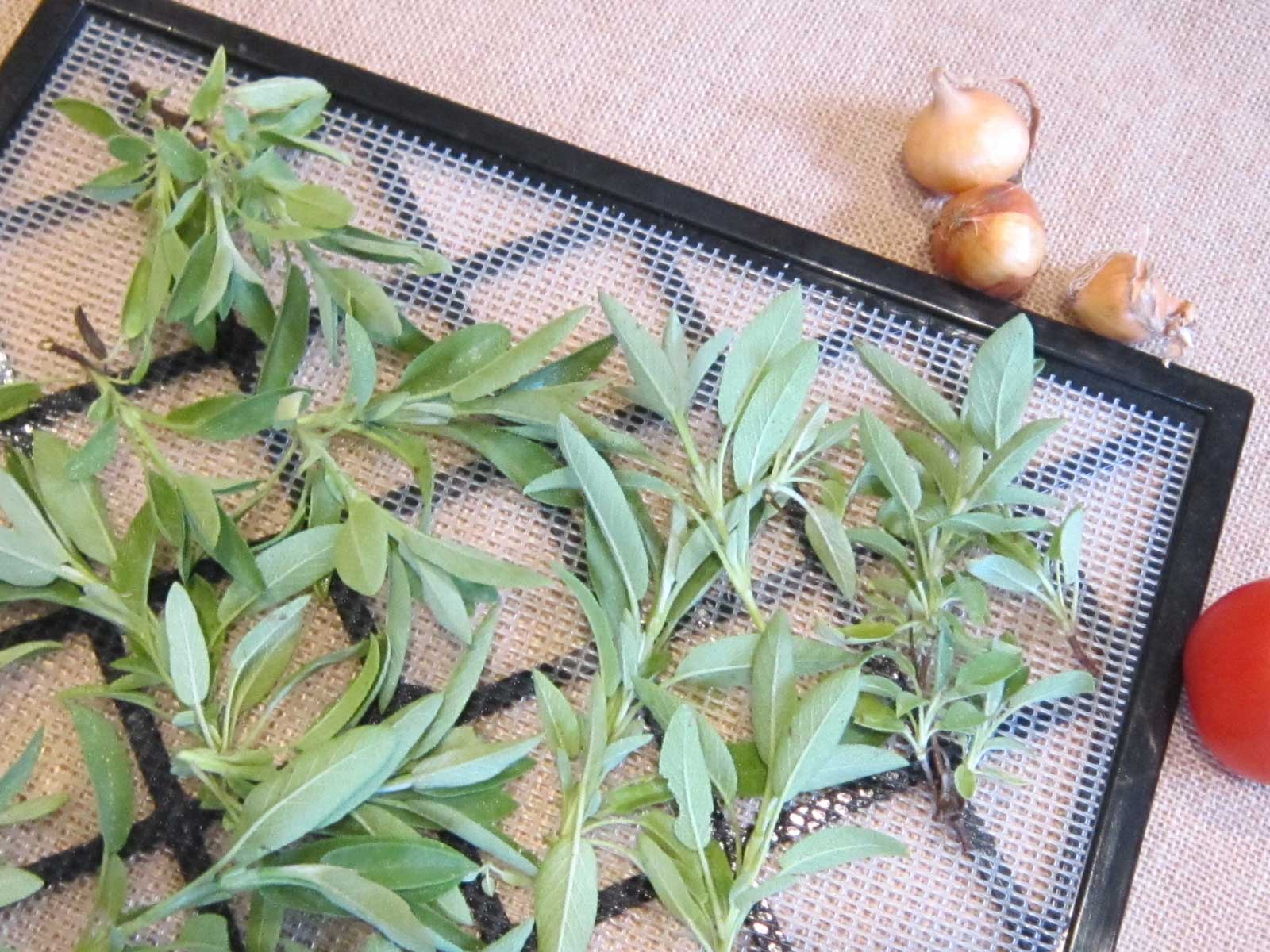 Drying time will depend on how dry the leaves are before you dehydrate. Average is around 8 hours at 125 degrees Fahrenheit/ 52 Celsius. When properly dried they will crush easily into flakes.
Drying time will depend on how dry the leaves are before you dehydrate. Average is around 8 hours at 125 degrees Fahrenheit/ 52 Celsius. When properly dried they will crush easily into flakes.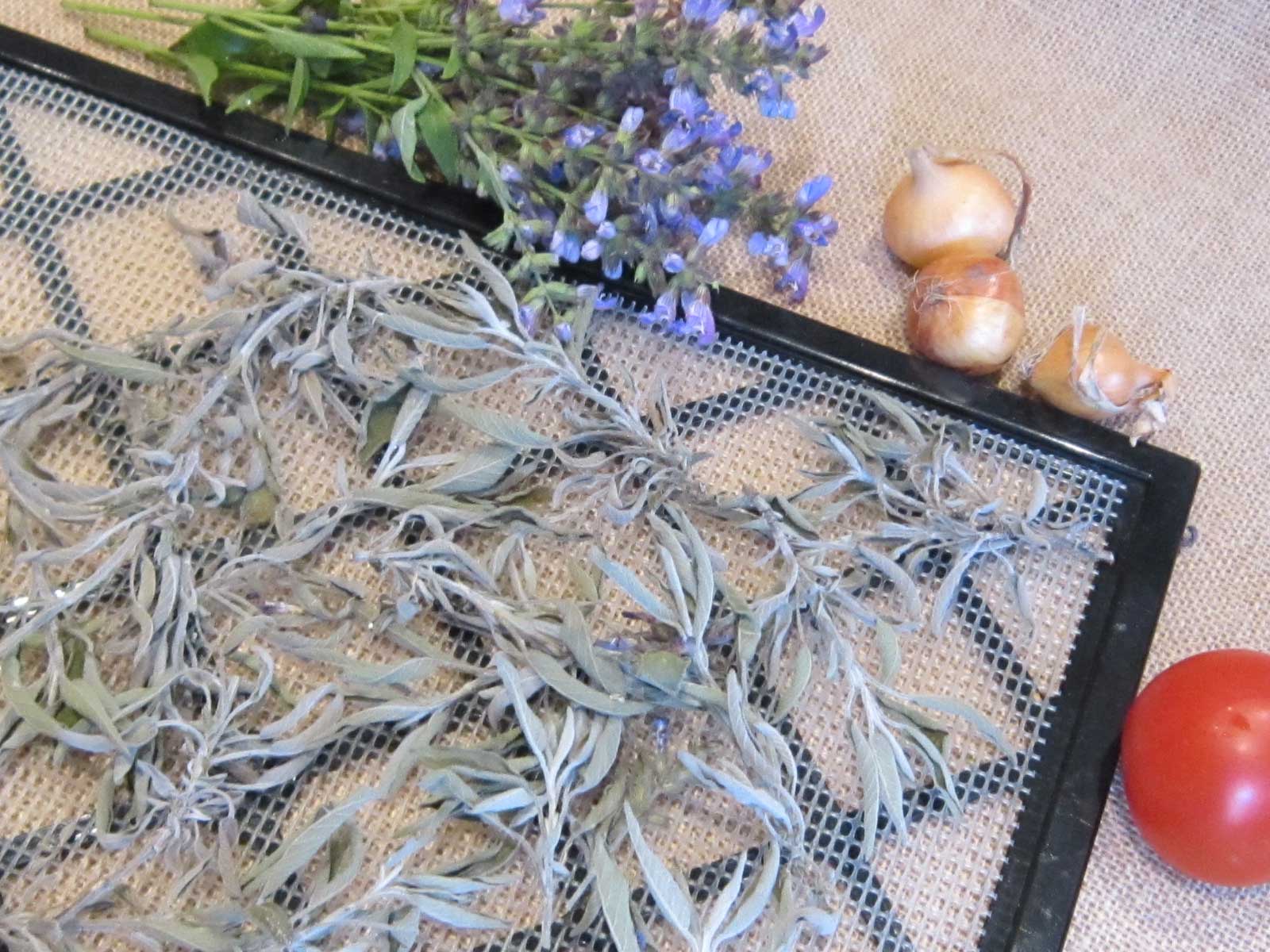
Once dried strip the leaves from the stalks and crush the leaves in between your fingers. After this you can either store them as flakes or make them into a powder.
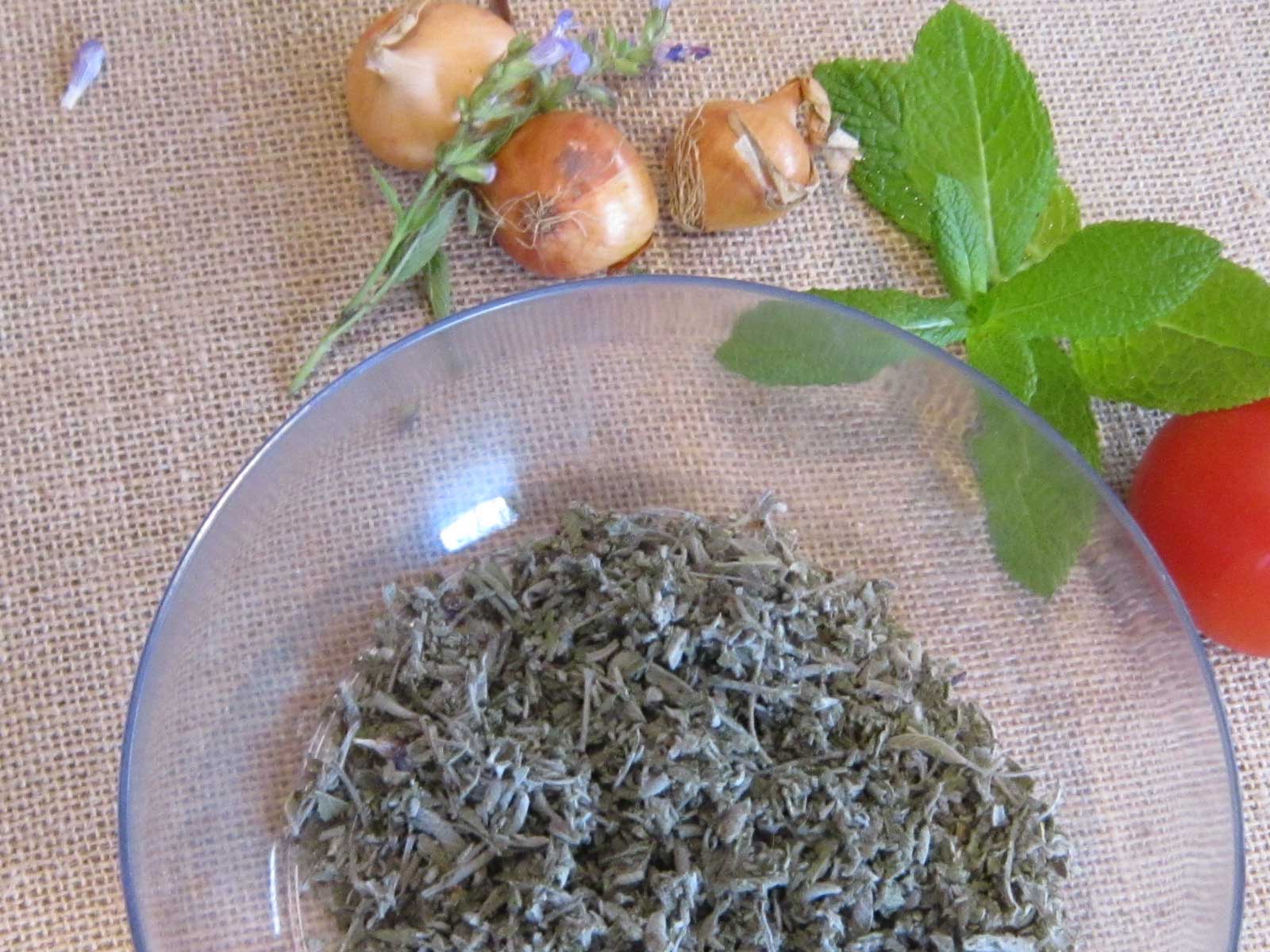
STORAGE
Store in sealed containers in a dark area and add oxygen absorbers to help keep the contents dry.
CONDITIONING
Conditioning is a process of making sure that whatever you have dried has as little moisture as possible in it. It’s a simple process and involves mixing or shaking to redistribute the Spinach and make sure it is completely dry. do this over a few days.
Tip: If I am making powder I usually do this immediately after the sage leaves come out of the dehydrator as I find that is when they are crispiest.
